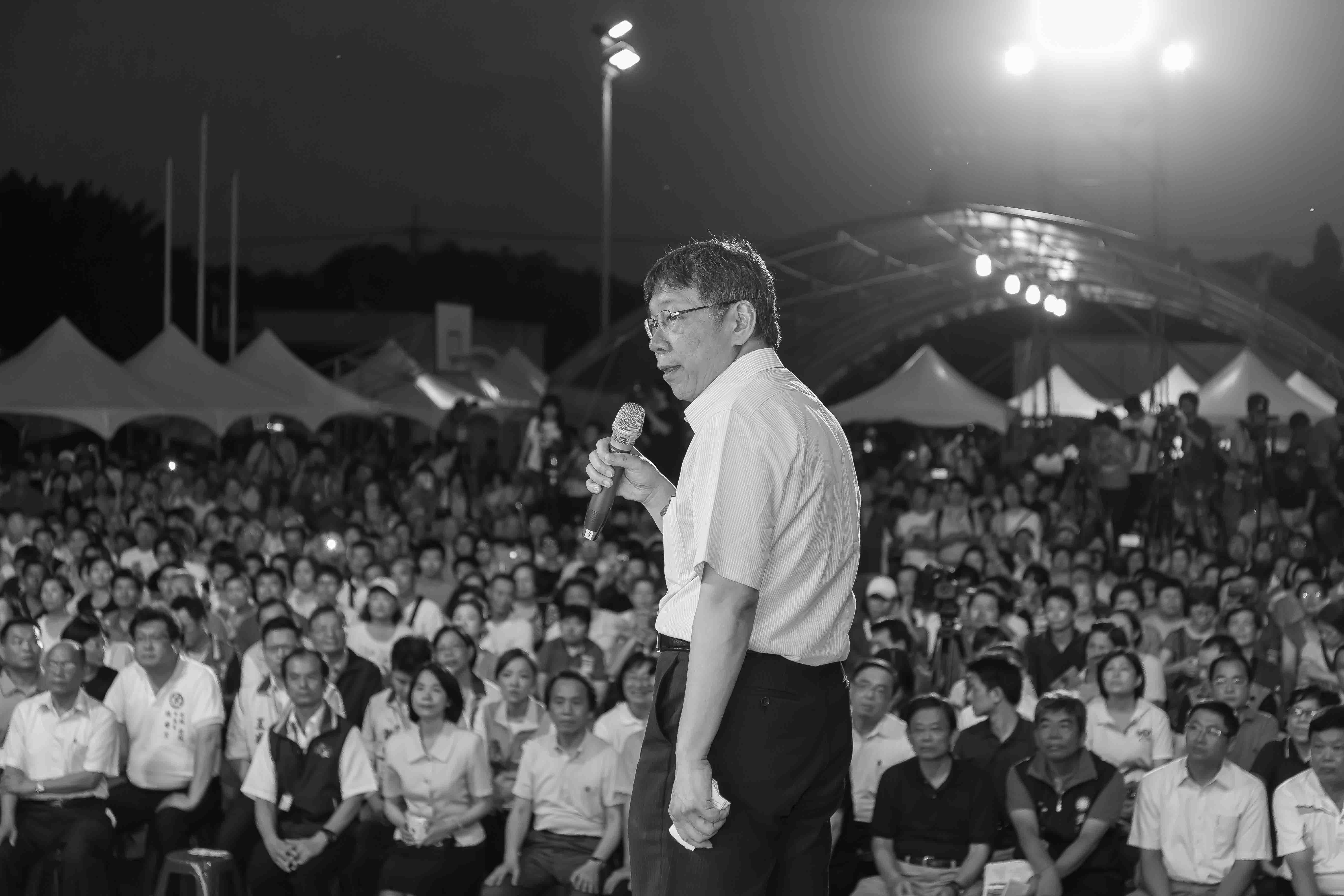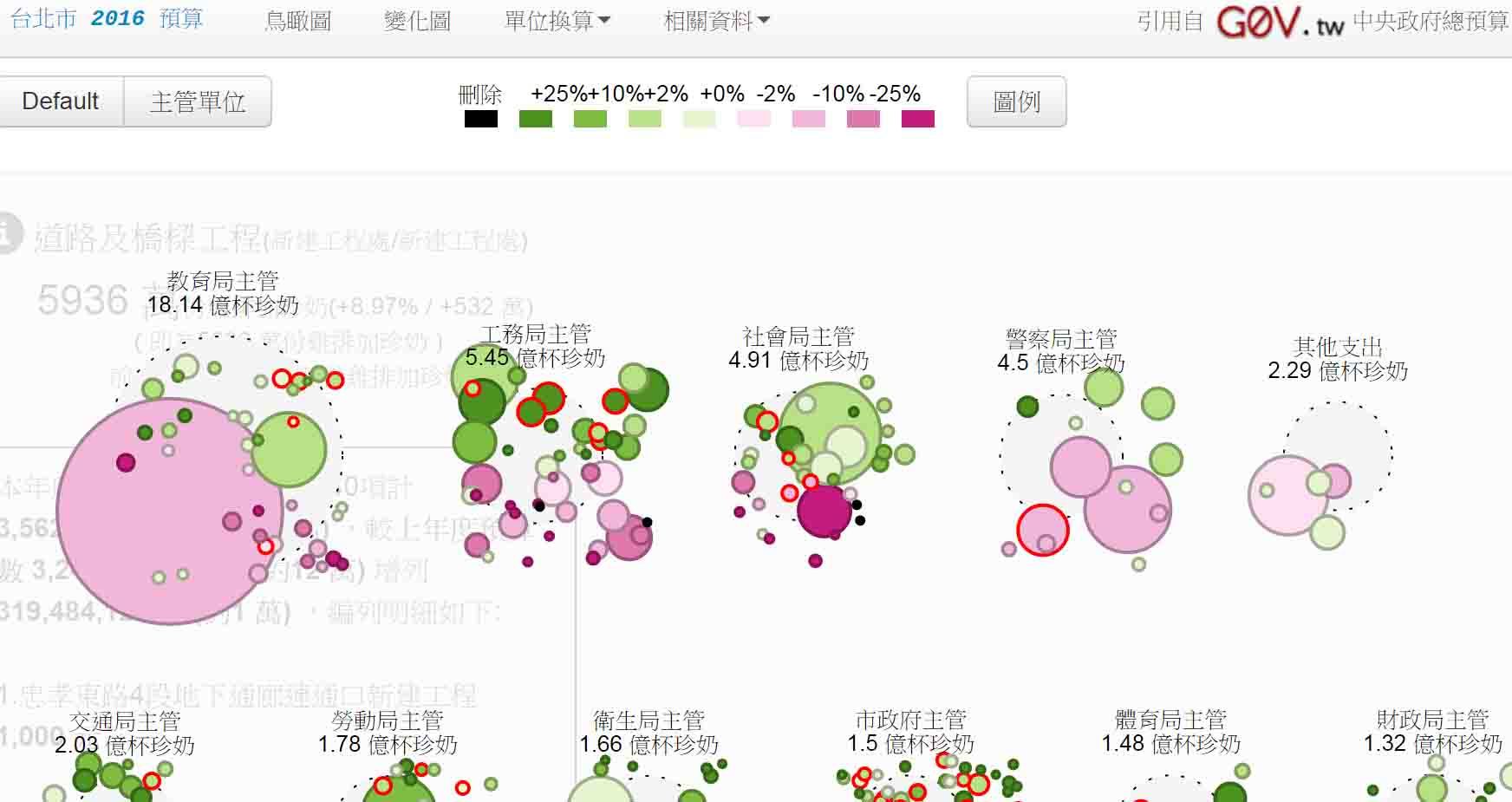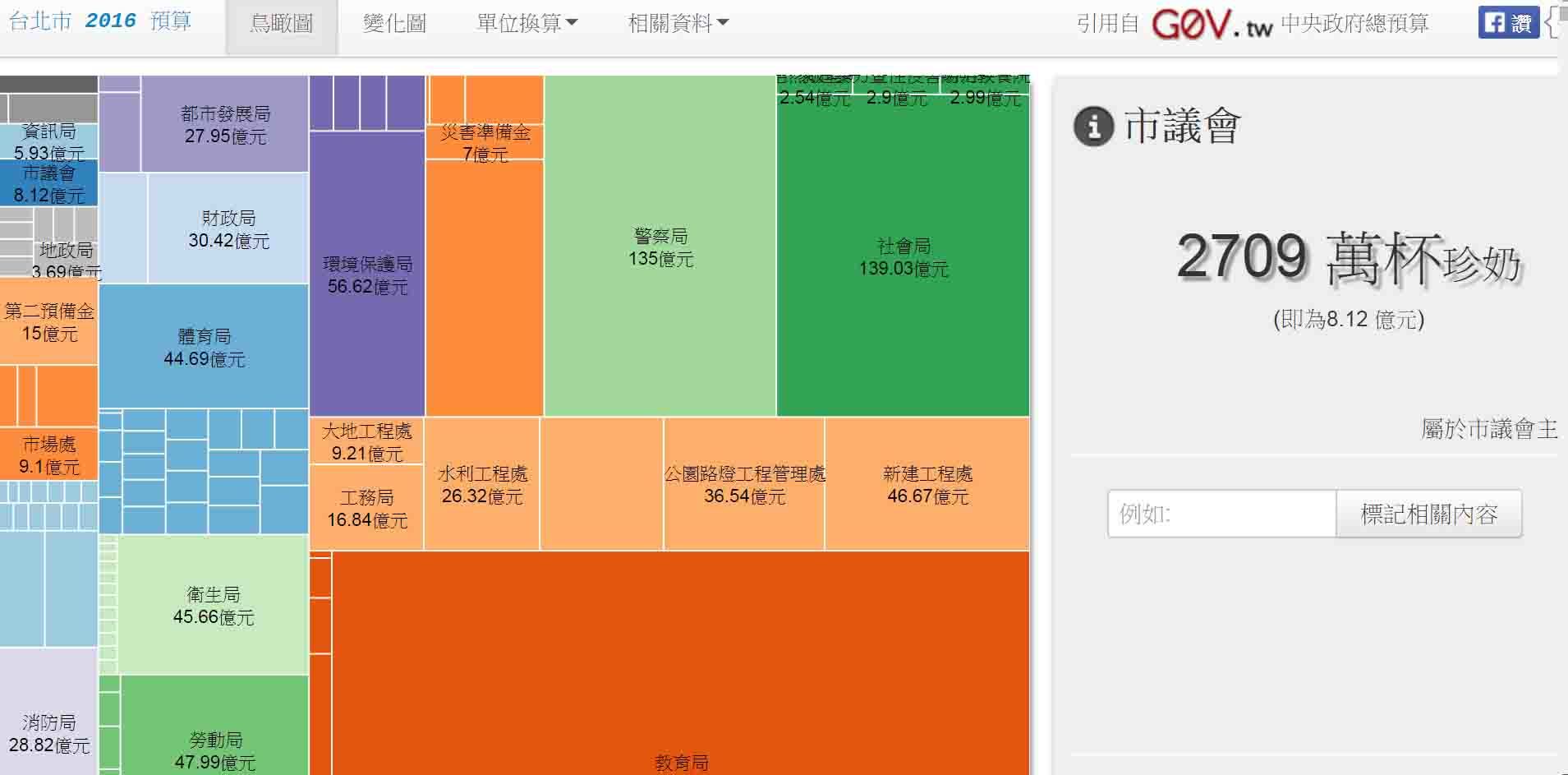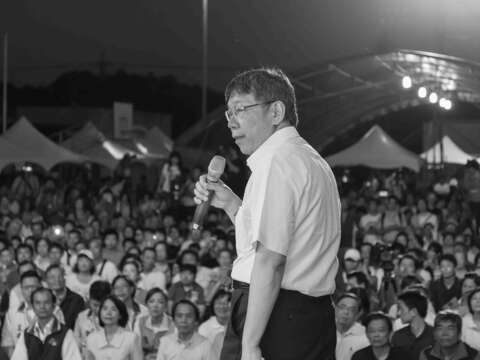Post date:2016-06-17
Updates:2016-08-23
1251
Article: Le Le
Photos: Pan Junlin
Do you know where your tax payments go? Do you feel that the government’s use of its annual budget is a “black box operation”? Would you like to be involved in government budget decisions? To fulfill the spirit of “open and transparent government with civic participation,” the Taipei City Government has transformed its budget data into images which allow those unfamiliar with accounting procedures to understand how money is distributed. In addition, under the concepts of participatory budgeting and civic participation and serving as the first example of participatory budgeting, a public assembly hall has been established, breathing new life into a citydesignated historic building.
Taiwan’s First “Understandable Budget” With Chicken Cutlets and Pearl Milk Tea as Units of Measure
The annual budget of the Taipei City Government is more than NTD 160 billion. City residents may not have a good understanding of how large this number is or how this budget is used. Providing such an understanding is key to promoting civic participation.
For this purpose, the Taipei City Government has collaborated with civic groups to turn these numbers into images and has even used nutritional lunches, braised pork with rice (滷肉飯) and pearl milk tea (珍珠奶茶) as “units”that allows the size of the budget to be easily understood. In addition, a message board has been set up with “delete” and “add” buttons for city residents to express their opinions regarding the city government’s budget. As it turns out, budgets can be fun.

Taipei Mayor Ko Wen-je has been in attendance at every outdoor town hall meeting, listening to the opinions and suggestions of residents regarding the environment in which they live.
Citizens Participate in the Decision Process
Transforming the budget data into images is one thing, but implementation is quite another. To allow the public to familiarize themselves with the concepts of participatory budgeting and the procedures and formats for submitting a proposal, the Taipei City Government has organized explanatory sessions and workshops in each of the administrative districts. This year, the Neihu Public Assembly Hall ( 內湖公民會館) was chosen as a test site. Opinions from the public were collected and architectural designers and district residents were invited to participate in discussions. Public opinion served as a reference for the renovation of the public assembly hall, as well as for activity and event planning. This was the first time that the Taipei City Government had implemented participatory budgeting.

The conversion of budget numbers into images makes them easy to understand. Taipei citizens can participate by providing suggestions for changes to the budget. (Photo: Budget.taipei Website)

Nutritional lunches, braised pork with rice and pearl milk tea are used as units of measure to allow budget data to be more easily understood. (Photo: Budget.taipei Website)
In addition to making the general budget public, the Taipei City Government has increased public access to other information. Since Taipei Mayor Ko Wen-je ( 台北市市長柯文哲) has taken office, the amount of publically available data has risen from 356 volumes to 731 volumes as of the end of
September of this year. Most of this information is related to disaster prevention including locations of shelters and areas prone to flooding. There are also three information items about home, auto and bicycle theft in hope of stimulating the Hawthorne effect, which means publicizing criminal acts and where they took place to decrease incidences of such crimes in these areas.
Outdoor Town Hall Meetings for
Understanding the Will of the People
“The will of the people, value, and professionalism” are the core concepts of Ko’s policy formulation. To fulfill the vision of “direction of government in line with the hopes of the people,” the Taipei City Government has held outdoor town hall meetings regarding the Shezidao (社子
島) and East District Gateway (東區門戶) development projects as well as the Revitalization of Zhongzheng and Wanhua Districts, and Datong Regeneration Projects.
Of special note is that in addition to Ko, the heads of the various departments of the Taipei City Government have been in attendance at each of these town hall meetings answering questions put forth by the public. For the Shezidao development plan, i-Voting has been implemented to enable local residents to decide the future of this plan. Listening to the opinions of the people, serving the people and providing efficiency are elements of the Taipei City Government’s service culture and the first step in creating an open government.
Note
The Hawthorne effect refers to a type of response in which an individual aware of being observed modifies his/her behavior.
Photos: Pan Junlin
Do you know where your tax payments go? Do you feel that the government’s use of its annual budget is a “black box operation”? Would you like to be involved in government budget decisions? To fulfill the spirit of “open and transparent government with civic participation,” the Taipei City Government has transformed its budget data into images which allow those unfamiliar with accounting procedures to understand how money is distributed. In addition, under the concepts of participatory budgeting and civic participation and serving as the first example of participatory budgeting, a public assembly hall has been established, breathing new life into a citydesignated historic building.
Taiwan’s First “Understandable Budget” With Chicken Cutlets and Pearl Milk Tea as Units of Measure
The annual budget of the Taipei City Government is more than NTD 160 billion. City residents may not have a good understanding of how large this number is or how this budget is used. Providing such an understanding is key to promoting civic participation.
For this purpose, the Taipei City Government has collaborated with civic groups to turn these numbers into images and has even used nutritional lunches, braised pork with rice (滷肉飯) and pearl milk tea (珍珠奶茶) as “units”that allows the size of the budget to be easily understood. In addition, a message board has been set up with “delete” and “add” buttons for city residents to express their opinions regarding the city government’s budget. As it turns out, budgets can be fun.

Taipei Mayor Ko Wen-je has been in attendance at every outdoor town hall meeting, listening to the opinions and suggestions of residents regarding the environment in which they live.
Citizens Participate in the Decision Process
Transforming the budget data into images is one thing, but implementation is quite another. To allow the public to familiarize themselves with the concepts of participatory budgeting and the procedures and formats for submitting a proposal, the Taipei City Government has organized explanatory sessions and workshops in each of the administrative districts. This year, the Neihu Public Assembly Hall ( 內湖公民會館) was chosen as a test site. Opinions from the public were collected and architectural designers and district residents were invited to participate in discussions. Public opinion served as a reference for the renovation of the public assembly hall, as well as for activity and event planning. This was the first time that the Taipei City Government had implemented participatory budgeting.

The conversion of budget numbers into images makes them easy to understand. Taipei citizens can participate by providing suggestions for changes to the budget. (Photo: Budget.taipei Website)

Nutritional lunches, braised pork with rice and pearl milk tea are used as units of measure to allow budget data to be more easily understood. (Photo: Budget.taipei Website)
In addition to making the general budget public, the Taipei City Government has increased public access to other information. Since Taipei Mayor Ko Wen-je ( 台北市市長柯文哲) has taken office, the amount of publically available data has risen from 356 volumes to 731 volumes as of the end of
September of this year. Most of this information is related to disaster prevention including locations of shelters and areas prone to flooding. There are also three information items about home, auto and bicycle theft in hope of stimulating the Hawthorne effect, which means publicizing criminal acts and where they took place to decrease incidences of such crimes in these areas.
Outdoor Town Hall Meetings for
Understanding the Will of the People
“The will of the people, value, and professionalism” are the core concepts of Ko’s policy formulation. To fulfill the vision of “direction of government in line with the hopes of the people,” the Taipei City Government has held outdoor town hall meetings regarding the Shezidao (社子
島) and East District Gateway (東區門戶) development projects as well as the Revitalization of Zhongzheng and Wanhua Districts, and Datong Regeneration Projects.
Of special note is that in addition to Ko, the heads of the various departments of the Taipei City Government have been in attendance at each of these town hall meetings answering questions put forth by the public. For the Shezidao development plan, i-Voting has been implemented to enable local residents to decide the future of this plan. Listening to the opinions of the people, serving the people and providing efficiency are elements of the Taipei City Government’s service culture and the first step in creating an open government.
Note
The Hawthorne effect refers to a type of response in which an individual aware of being observed modifies his/her behavior.
 TAIPEI 2015Winter Vol.02—Open Government and Civic Participation:
TAIPEI 2015Winter Vol.02—Open Government and Civic Participation:



